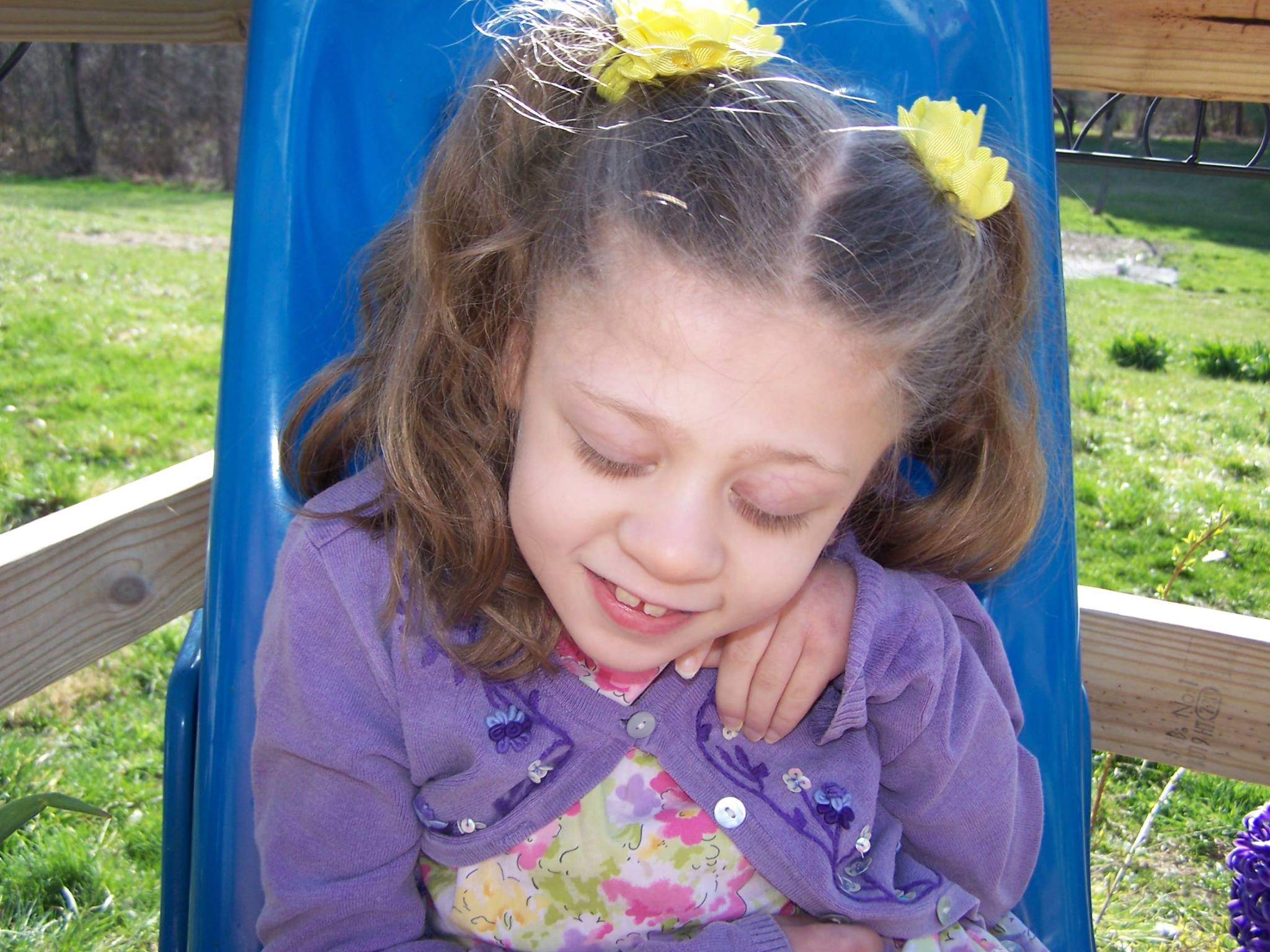Special Education, Traumatic Brain Injury
Blue Eyes And A Lopsided Grin
Oct 13, 2015, by Dawn GibsonTraumatic Brain Injury, Statistics
Her name was Carrie. She had an engaging lopsided smile, beautiful blue eyes and white-blond bobbed hair. She wore braces on her legs, and had a limp but those things didn't stop her from moving around at high speeds. I couldn't help but fall for her charms. She was only two and half when we met, but I remember her and still think about her to this day.
By the end of my junior year in high school, I had all but two of the credits I needed to graduate. With that in mind, one of my teachers created an independent study for me. I took the two classes I needed, in the morning at school, and by 10:30 am each day I was on my way next door to the elementary school to work in the special education preschool class. That is where I met Carrie.
One day her grandmother came to pick Carrie up from preschool. I was surprised to find out I knew her grandmother. Mrs. B had been my third grade teacher, and my class was the last class she had before she retired from teaching. I didn't know that Carrie was her grand daughter until that day. I told her how much I enjoyed her grand daughter, and how cute I thought she was. Grandmother smiled, and agreed. I knew that Carrie had traumatic brain injury, but I didn't know much else. That day I was told that Carrie had been born completely "normal", but as a baby her family had been in a terrible car accident. Even thought Carrie was strapped into her car seat, she was still injured. My former teacher went on to say that Carrie doesn't let her injuries slow her down, and the hope was that she would some day, with this early intervention, be able to fully recover. I remembered that moment in time. I remembered those words she spoke. 
As a senior in high school, just seventeen years old, I was wise enough to understand that traumatic brain injury (TBI) could happen to anyone, at any time. One bad accident, and life could change in an instant. Unlike some other special needs diagnoses, that have genetic, chromosomal factors, TBI's aren't always easily distinguishable. A person can struggle with TBI and the general population has no idea just how difficult it is.
I know other families who have children that understand the struggles all too well of living with traumatic brain injury. One friend, has a son that has a mitochondrial disorder, that has left him with some brain atrophy. Things, that at one time he knew how to do well, he now struggles with. He is recovering, and for that we are so thankful, but the process is slow going. Another friend, adopted a little girl who was also born "normal". That changed the day one of the adults in her life, who was supposed to protect this sweet infant, got angry. Sadly, this baby girl became yet another statistic of Shaken Baby Syndrome. Her little brain didn't survive the abuse. A moment of anger and frustration, left her with a lifetime of disability. She has since been adopted into a loving family, but her adoptive mother (my friend) still talks with sadness about how, "it didn't have to be this way". Unfortunately, statistics show that children between the ages of newborn and four years old are one of the groups that is much more likely to sustain trauma to the brain. The other age groups most affected are teens/young adults, and those individuals over age sixty-five. (see the CDC information on TBI's)
The statistics for TBI's in the United States are daunting, because with this particular diagnosis, it is not necessarily something a person is born with, but something that happens to them. An accident, a fall, a sports injury, or abuse. Traumatic brain injury could happen to any of us.




